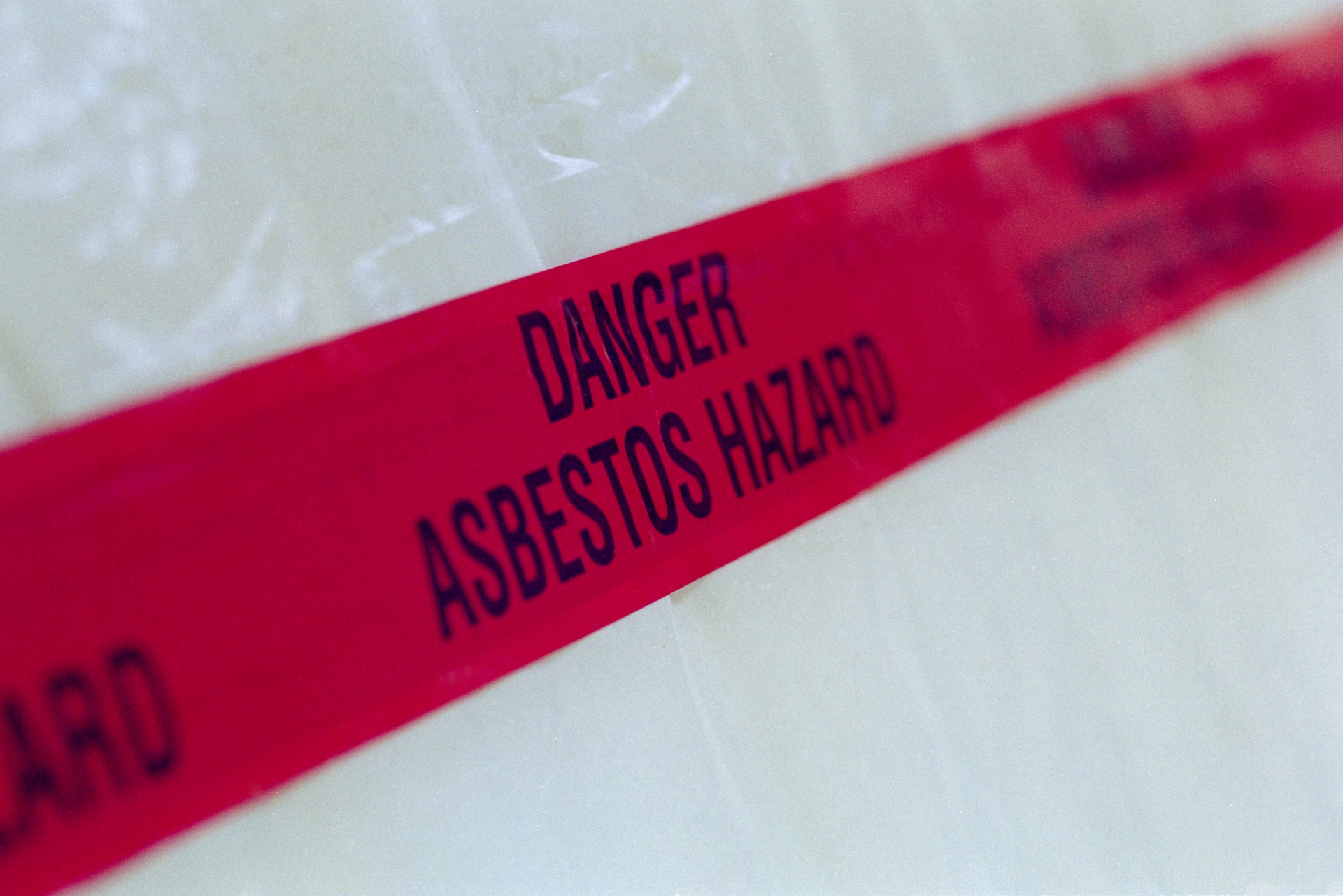Asbestos, once an incredibly common and widely praised building material, poses significant health risks if…

Asbestos Removal in Colorado: What Every Property Owner Needs to Know
Discovering asbestos in your home or commercial building can be overwhelming. Many property owners don’t know where to start, or even what asbestos is, until they’re suddenly faced with the reality of dealing with it. If your property was built before the 1980s, there’s a chance asbestos-containing materials (ACMs) could be present in flooring, insulation, or even wall textures.
Because asbestos exposure is linked to serious health conditions like mesothelioma, lung cancer, and asbestosis, it’s critical to understand how asbestos removal works, what regulations apply in Colorado, and why partnering with professional asbestos removal companies in Colorado is the safest choice.
In this guide, we’ll walk you through everything you need to know about asbestos removal, from identifying potential risks to understanding the step-by-step remediation process.
What is Asbestos and Why is It Dangerous?
Asbestos is a naturally occurring mineral that was widely used in building materials throughout much of the 20th century. It was popular because of its heat resistance, durability, and insulating properties.
Common places asbestos may still be found in Colorado homes and businesses include:
- Vinyl floor tiles and linoleum
- Tile adhesives (mastic)
- Roofing shingles and tar paper
- Drywall joint compound and textured ceilings
- Caulking around windows and doors
- Attic insulation (such as vermiculite)
The danger comes when asbestos fibers are disturbed and become airborne. Once inhaled, these microscopic fibers can lodge in the lungs and cause long-term health risks, including respiratory illnesses, lung scarring, and certain cancers.
Do You Need Asbestos Testing Before Removal?
Yes. According to the EPA’s National Emission Standards for Hazardous Air Pollutants (NESHAP), any property undergoing renovation or demolition must first be inspected for asbestos.
At Property Craft, we partner with independent, certified testing professionals to take unbiased samples. This ensures that asbestos is accurately identified before any work begins. If asbestos is confirmed, a customized asbestos removal plan is created to safely eliminate the hazard.
👉 Learn more about our asbestos removal services in Colorado.
The Asbestos Removal Process: What to Expect
Removing asbestos is not a DIY project. It requires strict adherence to safety regulations and specialized equipment to keep your family, tenants, or employees safe. Here’s how our certified asbestos removal contractors handle the process:
- Testing & Assessment – Third-party professionals collect samples and provide lab results.
- Planning – Our team reviews the results and designs a safe remediation plan tailored to your property.
- Permits & Compliance – We obtain all required permits to comply with Colorado Department of Public Health & Environment (CDPHE) regulations.
- Containment – We set up sealed zones with plastic barriers and negative air pressure systems to stop fibers from spreading.
- Safe Abatement – Certified technicians carefully remove asbestos-containing materials (such as flooring, drywall, or asbestos tiles) using proven techniques.
- Decontamination – Workers go through a decontamination chamber with showers before leaving the site.
- Detailed Cleaning – HEPA vacuums and wet cleaning methods remove any remaining fibers.
- Waste Disposal – All asbestos materials are securely bagged and transported to licensed disposal facilities, with a waste manifest provided for transparency.
- Final Clearance Testing – A third-party tester performs clearance testing to confirm the property is safe to reoccupy.
This comprehensive approach ensures your property is fully cleared of asbestos and ready for safe use again.
Why You Shouldn’t Attempt DIY Asbestos Removal
While it may be tempting to tackle asbestos removal yourself, doing so is extremely dangerous. Disturbing asbestos without proper containment and protective equipment can release harmful fibers into the air and put you, your family, or your tenants at serious risk.
According to the Centers for Disease Control and Prevention (CDC), there is no safe level of asbestos exposure, and even small amounts can be harmful over time. Professional asbestos removal companies in Colorado, like Property Craft, follow IICRC and RIA standards to protect your health and comply with state laws.
Asbestos in Colorado Homes: What Property Owners Need to Know
Colorado has stricter asbestos regulations than many other states. If you’re planning a renovation, selling your home, or dealing with water, fire, or storm damage, here are key things to keep in mind:
- Homes built before 1980 are more likely to contain asbestos.
- Asbestos tile removal and other demolition projects require licensed professionals.
- Clearance testing is mandatory before the property can be reoccupied.
- Insurance claims may require documentation of asbestos testing and removal.
- Asbestos is commonly discovered during water damage or fire restoration projects, making immediate testing critical.
Why Choose Property Craft for Professional Asbestos Removal in Colorado?
At Property Craft, we understand that asbestos concerns can be stressful. That’s why we focus on safety, transparency, and customer care at every stage. Here’s what sets us apart:
- Certified Experts – Our team holds multiple IICRC certifications in environmental restoration, including asbestos remediation.
- Strict Safety Protocols – We use HEPA filtration, containment systems, and decontamination showers to keep your home safe.
- Documentation for Insurance – We provide detailed reports and waste manifests to make the claims process smoother.
- 24/7 Emergency Response – We arrive within three hours for urgent situations.
- Workmanship Warranty – A one-year warranty backs all of our services for peace of mind.
- Local Expertise – As a trusted provider of asbestos removal in Colorado, we’re familiar with state and federal regulations, including CDPHE and EPA standards.
FAQs About Asbestos Removal
How do I know if my home has asbestos?
Homes built before 1980 in Colorado often contain asbestos, but it’s impossible to confirm by sight alone. Signs that your property may contain asbestos include:
- Year of construction (pre-1980 homes are higher risk)
- Vinyl tiles, popcorn ceilings, and drywall joint compound
- Attic insulation (especially vermiculite)
- Roofing materials like shingles and tar paper
The only way to confirm is through professional asbestos testing by a certified inspector.
Do I need asbestos testing before remodeling or demolition?
Yes. Both the EPA and Colorado law require asbestos inspections before major work. Testing is required:
- Before renovation or demolition projects (per EPA NESHAP)
- For all commercial buildings and most homes built before 1980
- By a CDPHE-certified inspector in Colorado
Skipping testing can lead to:
- Health risks from airborne asbestos fibers
- Regulatory fines and work stoppages
- Increased insurance claim complications
Can I remove asbestos myself?
DIY asbestos removal is unsafe and often illegal in Colorado. Risks include:
- Releasing toxic fibers into your home or neighborhood
- Exposure to diseases like mesothelioma and asbestosis
- Legal penalties for improper handling and disposal
Licensed asbestos removal contractors in Colorado provide:
- Containment barriers and negative air pressure systems
- HEPA vacuums and hospital-grade cleaning protocols
- Proper disposal at state-approved hazardous waste sites
What is asbestos tile removal?
Many older homes have asbestos in vinyl tiles and adhesives (mastic). Professional asbestos tile removal involves:
- Sealed containment zones to stop fiber spread
- Specialized tools for safe flooring and adhesive removal
- Worker decontamination chambers with showers
- Final HEPA vacuuming and clearance testing
Attempting tile removal without professional containment risks spreading asbestos throughout your property.
Is asbestos always dangerous, or only when disturbed?
Asbestos can remain stable if undisturbed, but becomes dangerous once damaged or disrupted. Risk scenarios include:
- Home renovations (drilling, sanding, demolition)
- Fire damage that burns or cracks asbestos materials
- Water damage causing materials to break down
- Everyday wear in older flooring, insulation, or ceiling tiles
Because damage is unpredictable, testing before renovation is strongly recommended.
Take the First Step Toward a Safer Home That’s Asbestos Free
If you suspect asbestos in your home or business, don’t wait. The longer asbestos is left unaddressed, the higher the health risks become.
The team at Property Craft is here to guide you through every step—from professional testing and safe asbestos removal to final clearance testing and full property restoration. With our 24/7 live response and certified asbestos removal contractors, you can feel confident that your property is in expert hands.
📞 Call us today or contact us online to schedule your asbestos inspection and get your property back to a safe, healthy state.

